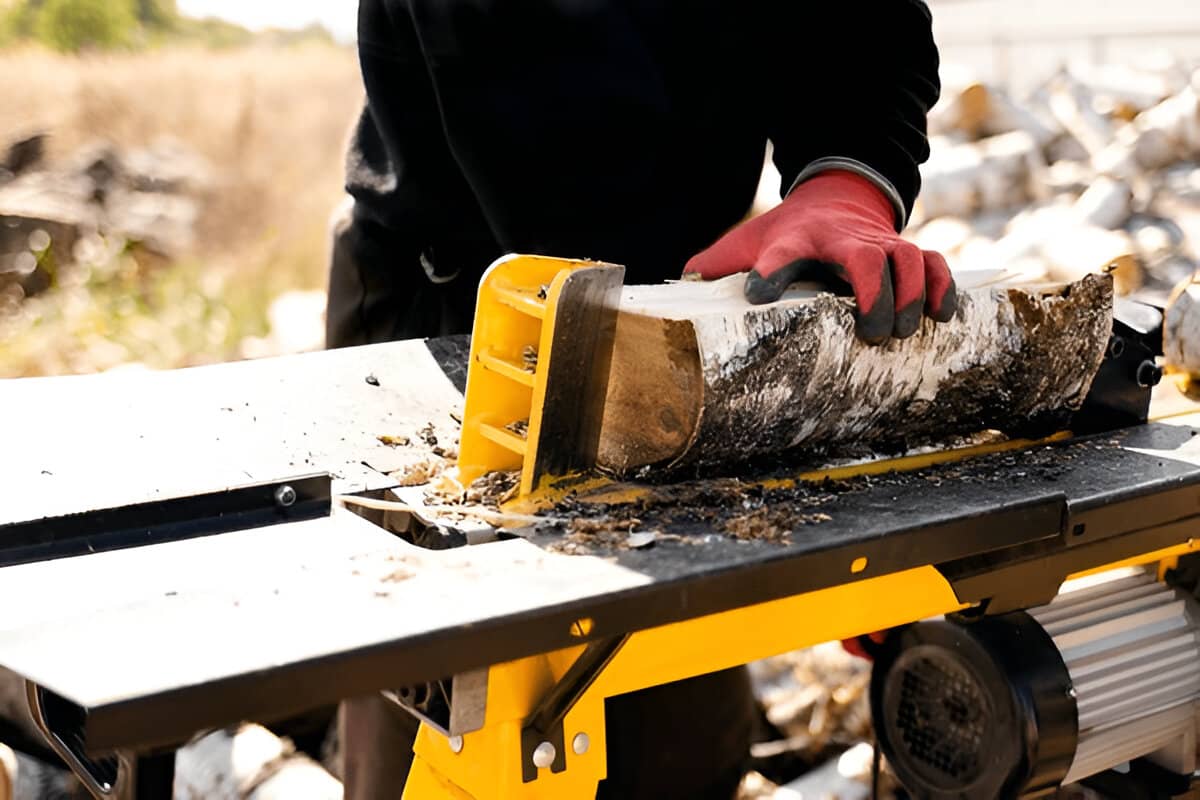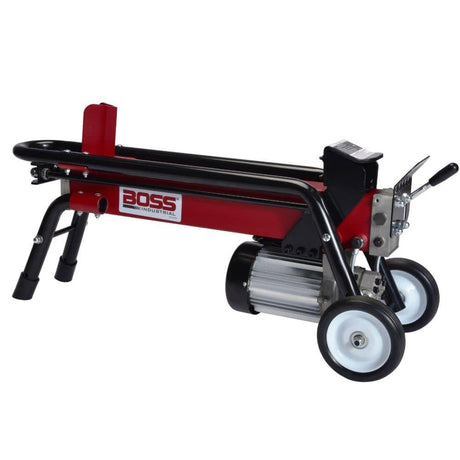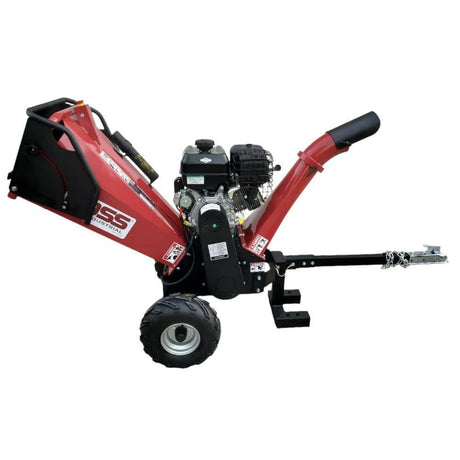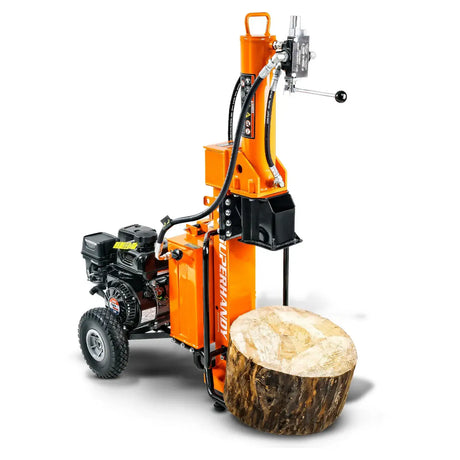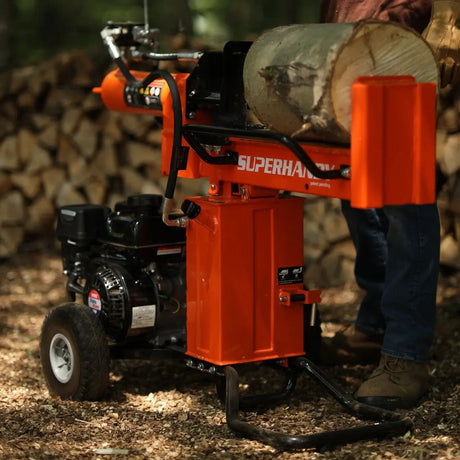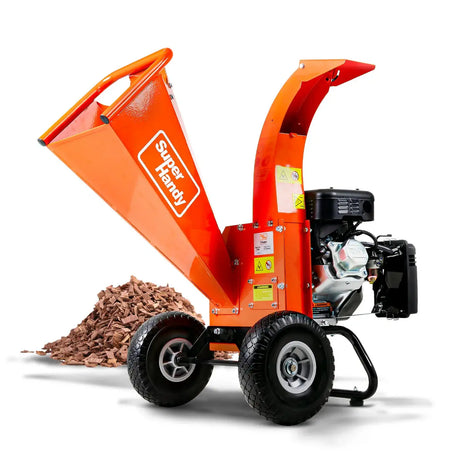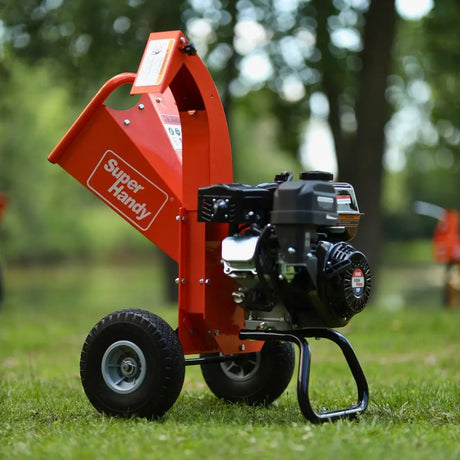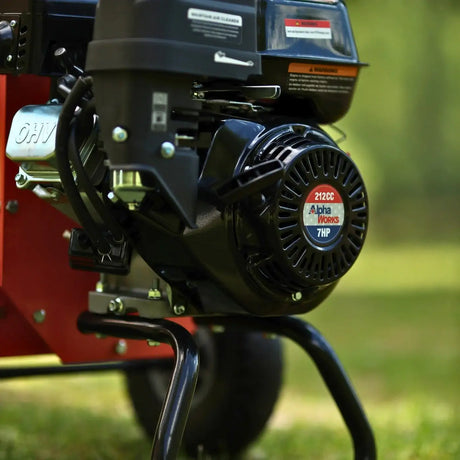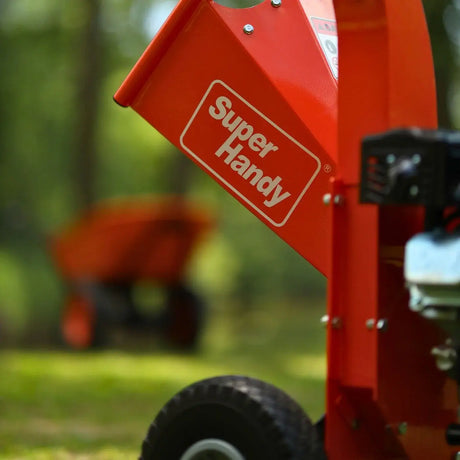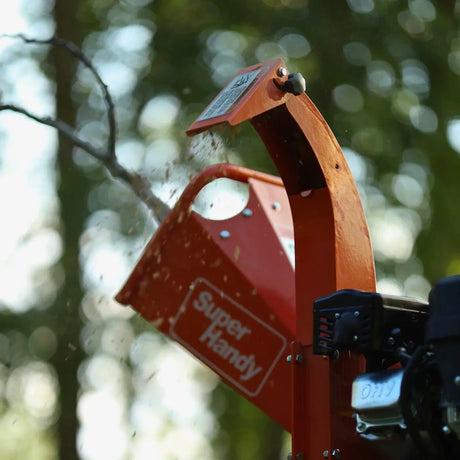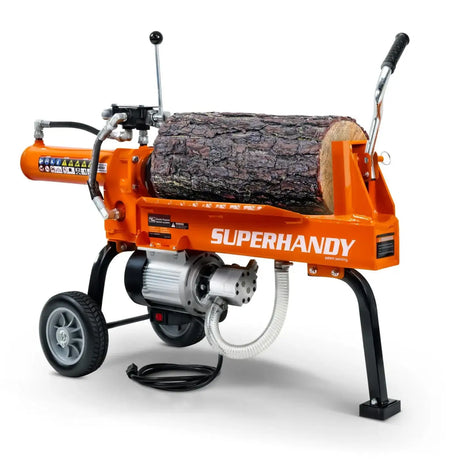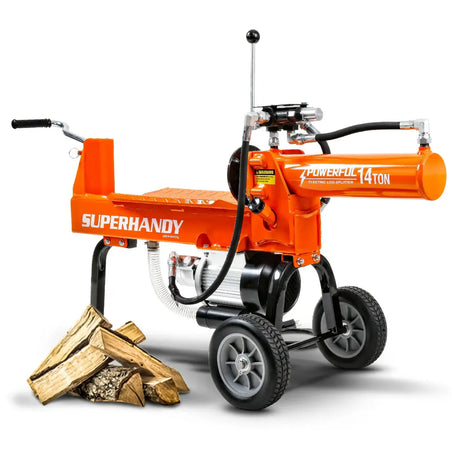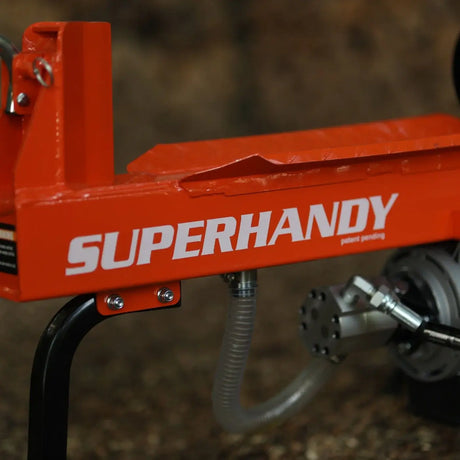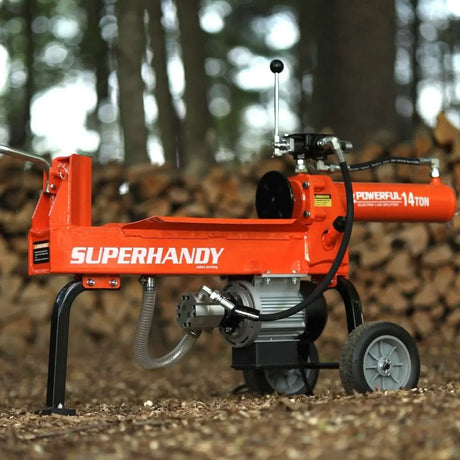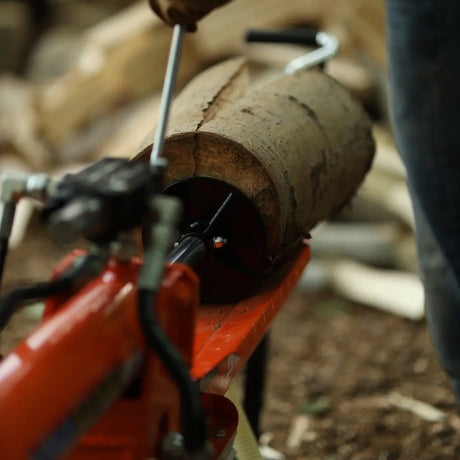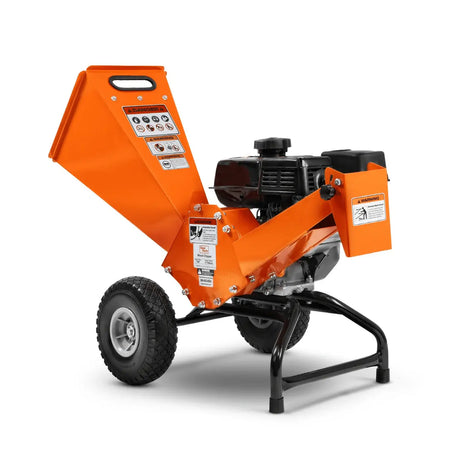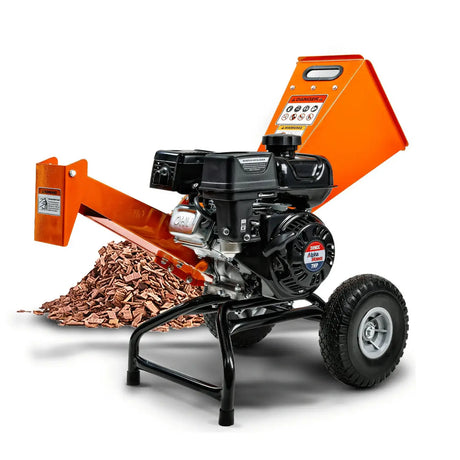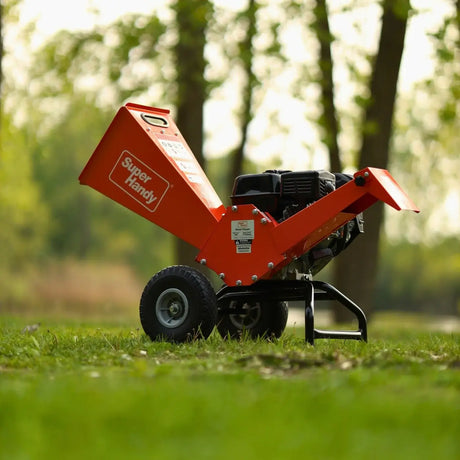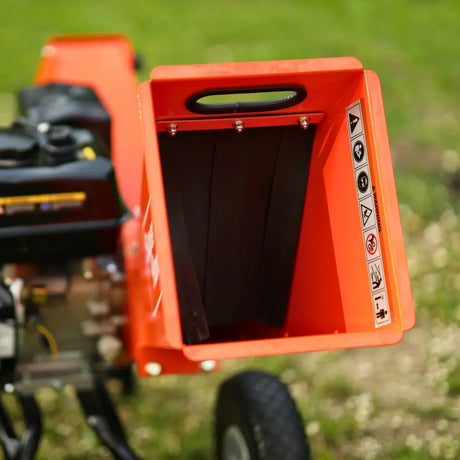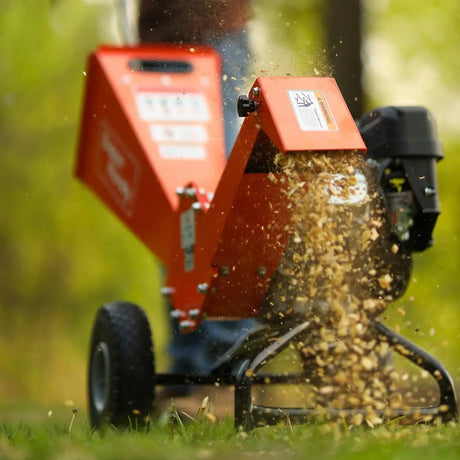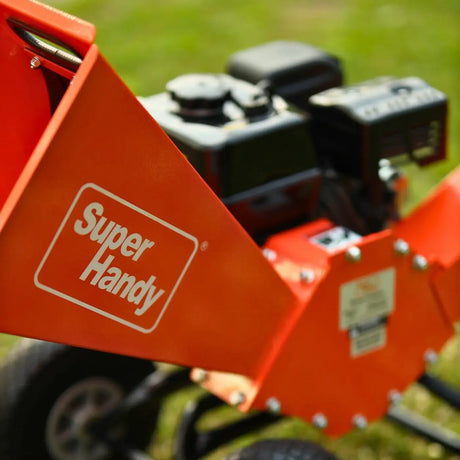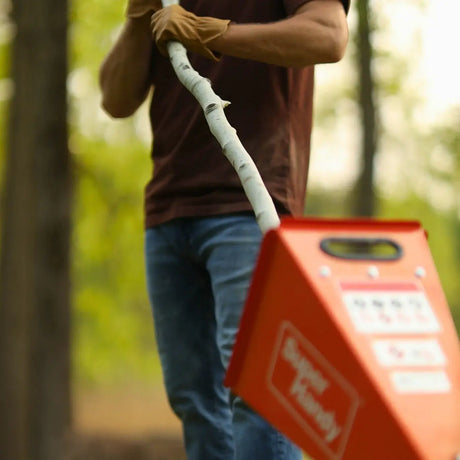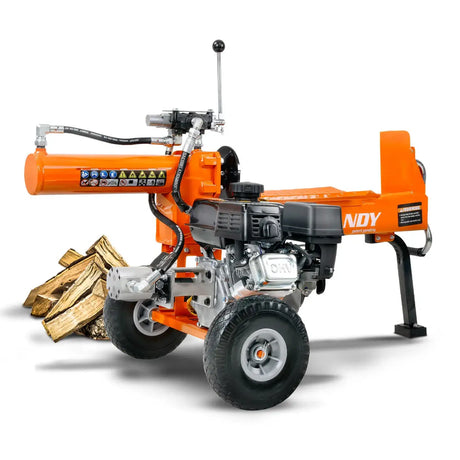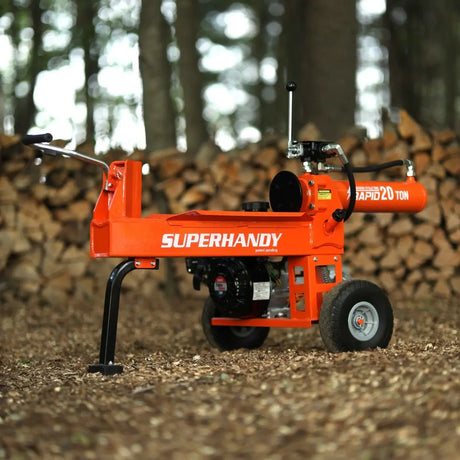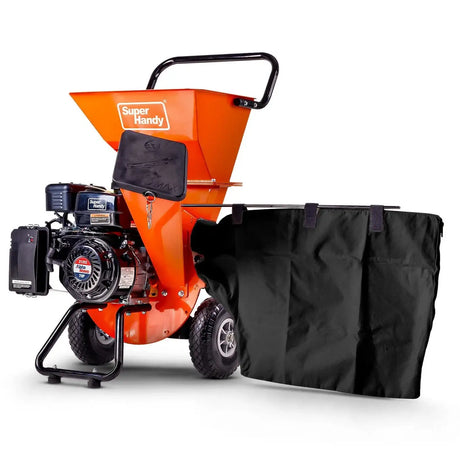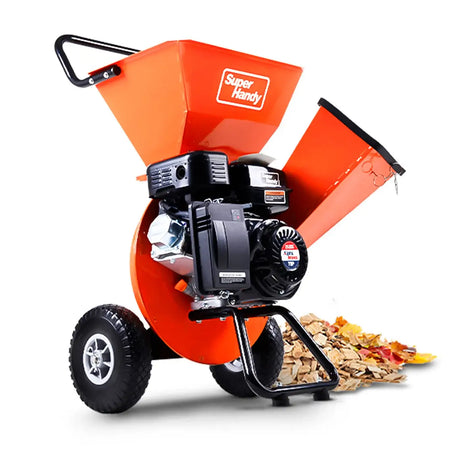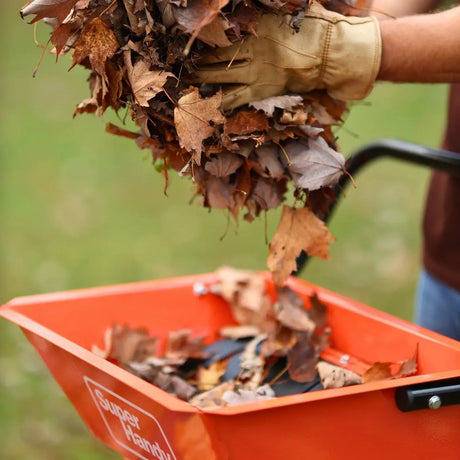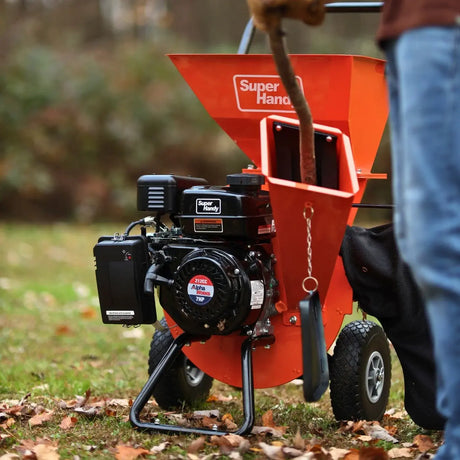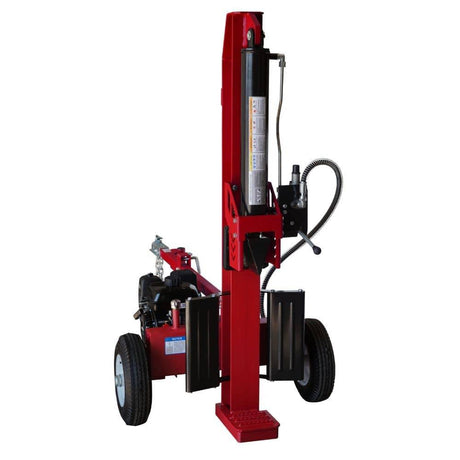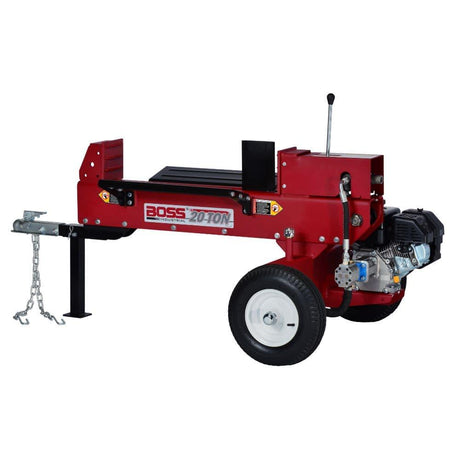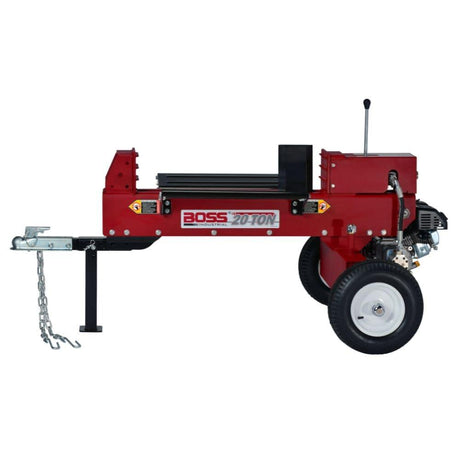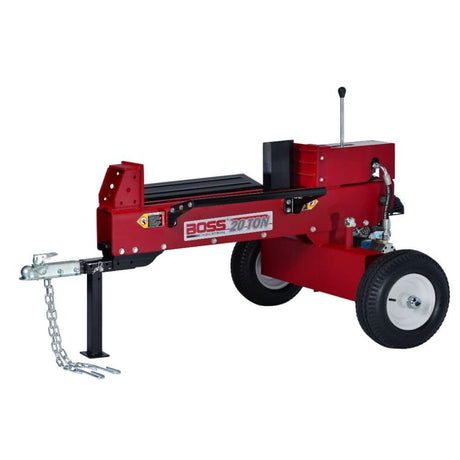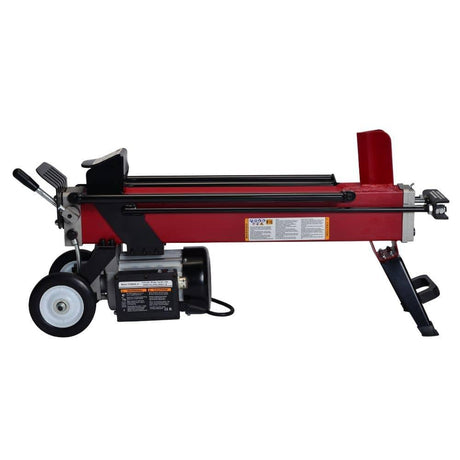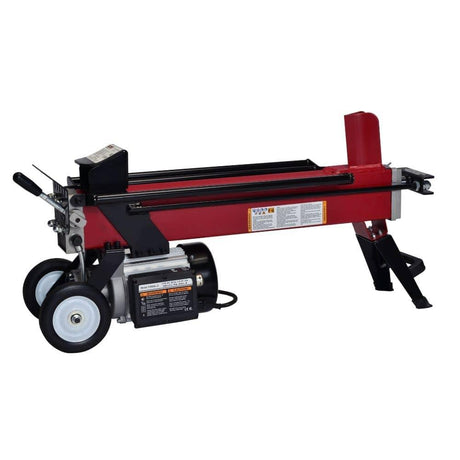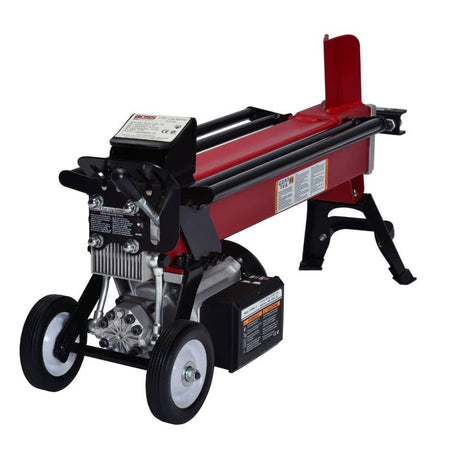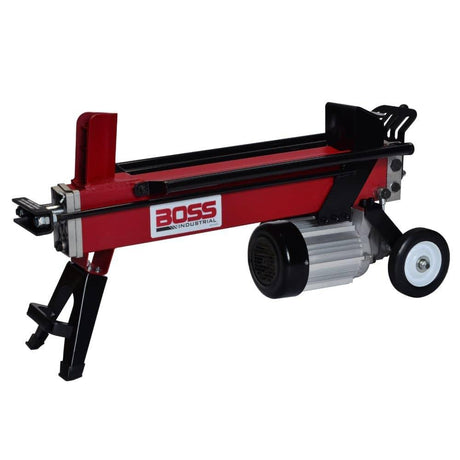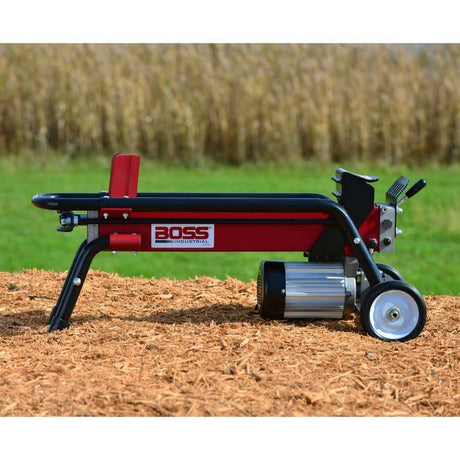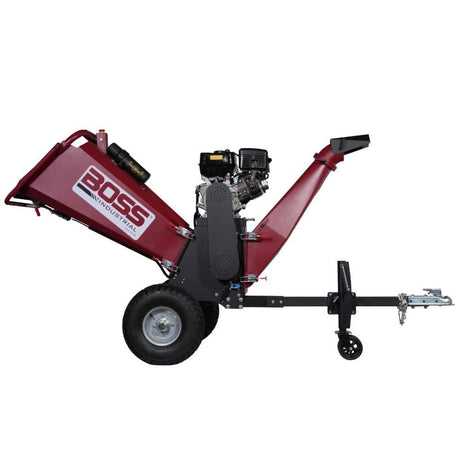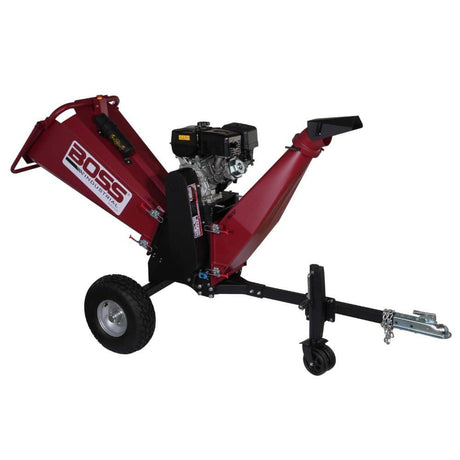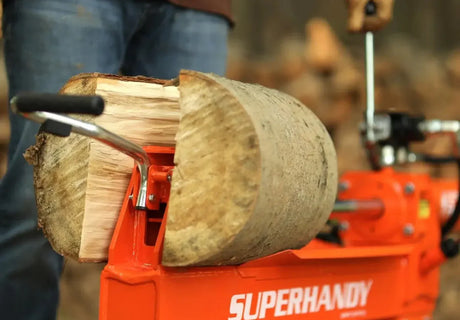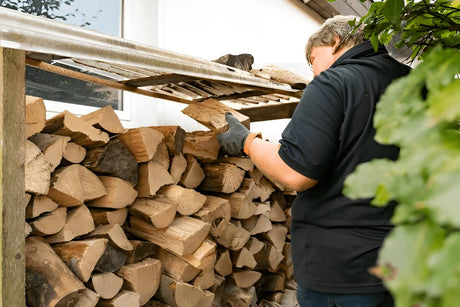Get Set Up: What to Know Before You Start
Before you fire up the log splitter and start tossing rounds onto the beam, a little prep work can save you time-and your back. Here's what to handle first. (We will be talking about electric and gas powered log splitters not manual log splitters)
Looking for tips on choosing the right model? Read our guide on what size log splitter you really need.
Choose the Right Location (Flat Ground, Open Space)
Set your log splitter on flat, solid ground-gravel, concrete, or compacted dirt works best. You want stability, not wobble.
Keep these in mind:
- Give yourself space to move safely around the machine
- Avoid wet grass or uneven slopes (especially with gas and heavy-duty models)
- Make sure there's enough room for your unsplit logs and finished stacks
A wide, open workspace makes the whole process smoother-especially if you're working solo.
Quick Pre-Use Checks (Power, Fluids, Controls)
Don't skip this part-even if you used the log splitter last week.
Run through this quick log splitter checklist before every use:
- Power source: Plug in electric models securely; check cords for wear
- Fuel/oil: For gas units, top off fuel and engine oil
- Hydraulic fluid: Check the dipstick or sight glass-low fluid = weak splitting
- Controls: Make sure levers or buttons move freely and return properly
- Wedge & beam: Clear of sap, bark, or built-up debris
If something looks off, fix it now-not mid-split.
For detailed upkeep by hours of use, see our maintenance checklist by hours of use for step-by-step care.
Safety Gear to Wear (Gloves, Boots, No Loose Clothing)
You don't need a hazmat suit, but a few basics go a long way:
- Work gloves with grip (not bulky winter ones)
- Steel-toe or heavy boots - dropped logs hurt
- Fitted clothing - no baggy sleeves or scarves near moving parts
- Eye protection such as safety glasses if you're splitting old, dry wood that might snap
Even seasoned users get caught off guard by flying chunks or slippery rounds. Dress like you expect the unexpected.
Log Prep Basics (Length, Grain, and Clean Cuts)
Log splitters work best when the log is ready to cooperate.
Here's how to make that happen:
- Cut logs to the right length: Match the length to your log splitter's max (usually 16"-24")
- Check the grain: Split along the grain whenever possible
- Avoid huge knots if you can - they'll slow you down
- Clean cuts on the ends help the ram push cleanly and prevent rolling
Pro tip: If a log's too wide, take a thin slice off first. Easier to handle and easier on the machine.
Shop Gas & Electric Log Splitters →

Step-by-Step: How to Use a Log Splitter Properly
Once everything's set up, it's time to start splitting. Here's exactly how to use your log splitter the right way-no second guessing, no wasted effort.
Step 1: Position the Log Splitter for Comfort and Access
Before you even grab your first log, take a second to line things up smartly.
- Stand where you can work without twisting or reaching
- Keep unsplit logs on one side, finished wood on the other
- If using a vertical/horizontal splitter, set it to the position that fits your log size and saves your back
Think of this like setting up a workbench-efficient placement keeps you safer and faster.
Step 2: Place the Log Flat Against the Wedge
Always load the log flat and centered on the beam. No angles. No stacking.
- Butt end against the backplate or splitting wedge, depending on design
- Bark side up or down doesn't matter-what matters is stability
- Avoid round logs that want to roll-split those in halves first
Wobbly logs are where most user mistakes (and pinched fingers) happen.
Step 3: Engage Controls (Electric or Gas Models)
Use the log splitter's controls exactly as designed. For most kinetic and hydraulic log splitters , it's a two-handed system-one for the hydraulic lever or button, and one on the safety switch.
- Electric models: Hit the start button, then operate the control lever
- Gas models: Engine on first, throttle up, then engage the control
Don't bypass safety systems. They're there for a reason.
Need help deciding between types? Check out our breakdown of electric vs gas log splitters.
Step 4: Let the Wedge Do the Work - Don't Force It
Once the wedge starts moving, let it go at its own pace. No need to push or lean on the log.
- If the log doesn't split cleanly, back off and try a different angle
- Don't try to "help" the splitter-forcing things can damage the ram
- If you hear straining or see the wedge stop, pause and check for knots or placement issues
Good splitters don't need muscle-they need patience.
Step 5: Remove Split Pieces and Reset for the Next Log
When the wedge completes the stroke or the log splits:
- Release the controls to let the ram retract
- Safely clear both halves and set them aside
- Watch for stuck wood-use a tool to knock it loose if needed, not your hands
Keep your hands clear of moving parts at all times. Don't get casual just because it's "just another log."
Step 6: Repeat with Efficiency (Batch Logs for Speed)
The secret to fast splitting? Work in batches.
- Stack 5-10 logs within reach before you start
- Move smoothly from one log to the next without hunting for pieces
- Keep your path clear-don't let split firewood pile up underfoot
This method keeps your rhythm steady and your energy up. Splitting wood should feel like a flow, not a chore.
For a quick breakdown by scenario, check out our use-case chart to pick the right splitter.

Pro Tips to Split Logs Faster and Smarter
Splitting logs isn't just about brute force. It's about rhythm, technique, and reading the wood. Here are some pro-level tips that'll help you work smarter-not just harder.
Face the Grain Right for Cleaner Splits
Wood wants to split-if you give it the right direction.
- Always line up the log so the grain runs front to back, parallel with the wedge
- Look for natural cracks or splits-those are your entry points
- Avoid cross-grain placements or twisted grain unless you enjoy a challenge
A clean split means less resistance and faster cycles. You'll also reduce stress on the machine.
Deal with Tough Knots or Wet Wood Without Stalling
Every pile has its troublemakers-knots, green rounds, stringy species like elm.
Here's how to handle them:
- Knots: Split around them, not through them. Angle the log to avoid the worst part.
- Green wood: Expect more resistance. Go slow and let the ram do its thing.
- Wedge bounce or stop? Back off and try again with a different side.
- For extreme cases, pre-split with a saw or axe to give the machine a head start.
Not every log will cooperate-but with a little finesse, you'll still win.

Work in Batches: Keep a Rhythm, Not Just Raw Speed
The pros don't split one log, walk around, and grab another. They work in zones.
Try this workflow:
- Pre-stack 5-10 logs within reach
- Split each one and toss the halves to your "done" pile
- Keep your feet planted and your motion repetitive
- Take a quick break, restock your feed zone, repeat
You'll burn through your pile faster with less wasted motion-and your back will thank you.
Stack as You Go to Keep Your Work Area Clear
Clutter slows you down and creates trip hazards.
- Stack split wood in a neat row or crate behind you
- Use a wagon or tarp to haul away finished pieces in batches
- If you're working with a partner, one splits while the other stacks-it's the most efficient system there is
A clean workspace makes the job smoother, safer, and a lot more satisfying.

4 Things That'll Make You Look Like a Seasoned Pro
Want to look like you've been doing this for years? It's not about speed or muscle-it's about smooth moves, smart habits, and staying sharp.
Know When to Flip the Log or Reposition
If the wedge starts to stall, don't force it. Just rotate the log.
- Flip it 90° or aim for a visible crack
- On stubborn rounds, a second hit from a different angle usually does the trick
- For uneven logs, rotate until you find the most stable side to split from
Pros don't waste time fighting the log-they work with it.
Use Both Hands Even If It Feels Slower (It's Smarter)
Most log splitters have two-hand controls for a reason: safety. But there's a hidden bonus-more control = better rhythm.
- Keeps your focus sharp
- Prevents accidental jams or slips
- Builds a consistent workflow you can trust
It might feel slower at first, but it's faster in the long run-and way safer.
Keep Logs Nearby, But Clear of the Ram Path
A good setup is tight, but never cluttered.
- Stack your uncut rounds within easy reach
- Leave the area near the ram and wedge totally clear
- Never rest a log on the beam unless you're about to split it
Logs bouncing into the ram path is one of the easiest ways to jam your machine or wreck a cycle.
Shut Down Cleanly - Don't Just Walk Away
When you're done splitting firewood, don't just flick off the switch and head inside.
- Retract the ram fully
- Turn off the engine or unplug
- Brush off bark and debris
- Stack or cover your finished wood
- Store the machine somewhere dry if you're done for the season
It takes two minutes, but saves you headaches next time.


